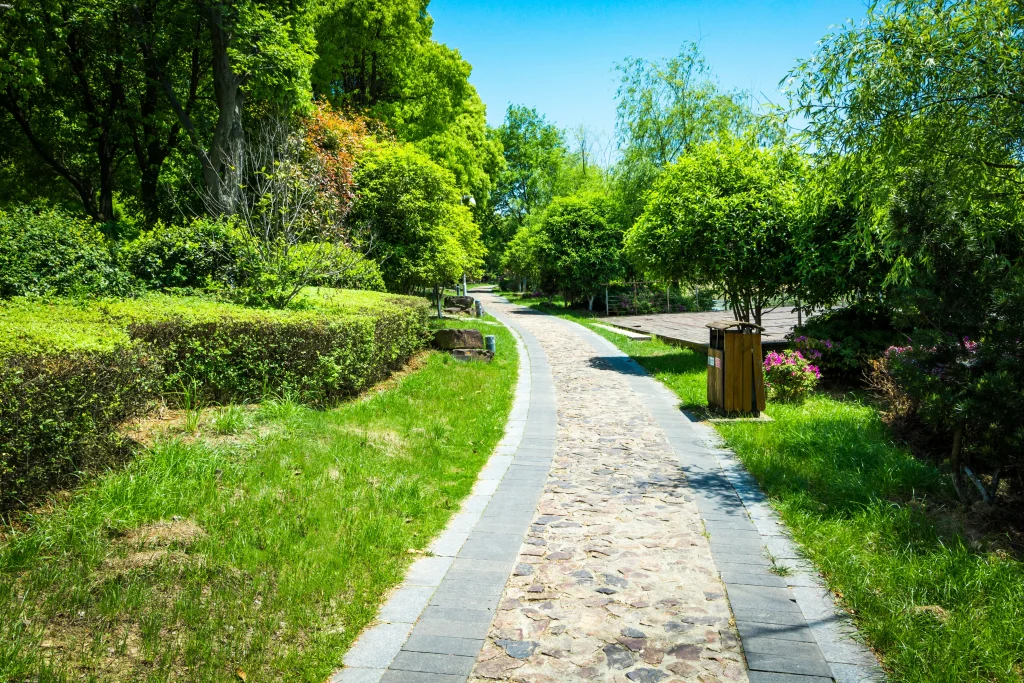Every time you mow your lawn, you’re left with a pile of grass clippings. But what if that “waste” could become one of the best free mulches for your garden?
In Denver, where moisture retention and soil health are critical, using grass clippings as mulch can help conserve water, reduce waste, and nourish the soil if done correctly.
In this guide, you’ll learn whether grass clippings make good mulch, how to use them safely and with success, the mistakes to avoid, and the best techniques for your gardens.
What are grass clippings?
Grass clippings are simply the finely cut remains left after mowing your lawn. Despite being seen as waste, they’re rich in:
- Nitrogen (up to 4%)
- Potassium and phosphorus
- Trace minerals and organic matter
When you mulch grass clippings instead of bagging and disposing of them, you’re not just reducing landfill waste, you’re creating a nutrient-dense layer that feeds your soil while protecting it from harsh environmental conditions.
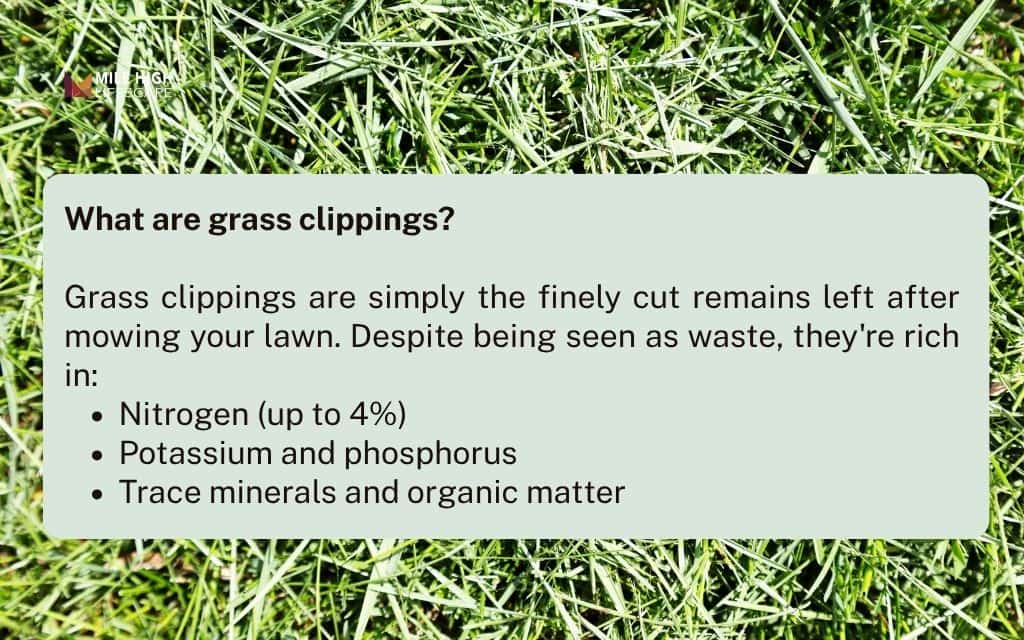
The science behind grass clipping mulch
Clippings break down fast, providing readily available nitrogen for soil microbes. This rapid decomposition triggers a cascade of benefits:
- Microbial activity increases, enriching soil texture and fertility
- Carbon-to-nitrogen ratio balances, supporting beneficial bacteria
- Soil structure improves over time through increased organic matter
Over time, this process mimics slow-release composting, ideal for nutrient-poor or compacted soils. In Colorado’s challenging clay-heavy or sandy soils, this natural fertilization process builds the humus layer that many gardens desperately need.
Are grass clippings good for the garden?
Yes, but with care. Grass clippings can act as a moisture-retaining, nutrient-recycling layer that protects your soil from Denver’s intense sun and wind.
Key benefits:
- Moisture conservation: Using grass clippings as mulch reduces evaporation by up to 50%. In a region where we receive only 15% of annual rainfall, this water savings translates to lower irrigation bills and healthier plants during drought restrictions.
- Weed suppression: Forms a light barrier against weeds. While not as thick as wood chips, a proper layer of lawn clippings in garden beds creates enough coverage to block many annual weeds from germinating.
- Nutrient recycling: Returns nitrogen and organic matter to the soil. The nitrogen content in grass clippings vegetable garden applications can reduce your fertilizer needs by 25-30%.
- Temperature control: Keeps roots cooler during summer heatwaves. Denver’s intense sun exposure can heat soil surface temperatures, but a protective layer of mulched grass clippings moderates these extremes.
- Erosion prevention: Our spring chinook winds can strip away unprotected topsoil, but even a thin layer of organic mulch provides critical protection.
- Denver advantage: In Colorado’s thin, sandy, or clay-heavy soils, grass clippings help build structure and boost microbial activity naturally. The organic matter gradually improves soil tilth, making it easier to work and better able to retain both water and nutrients.
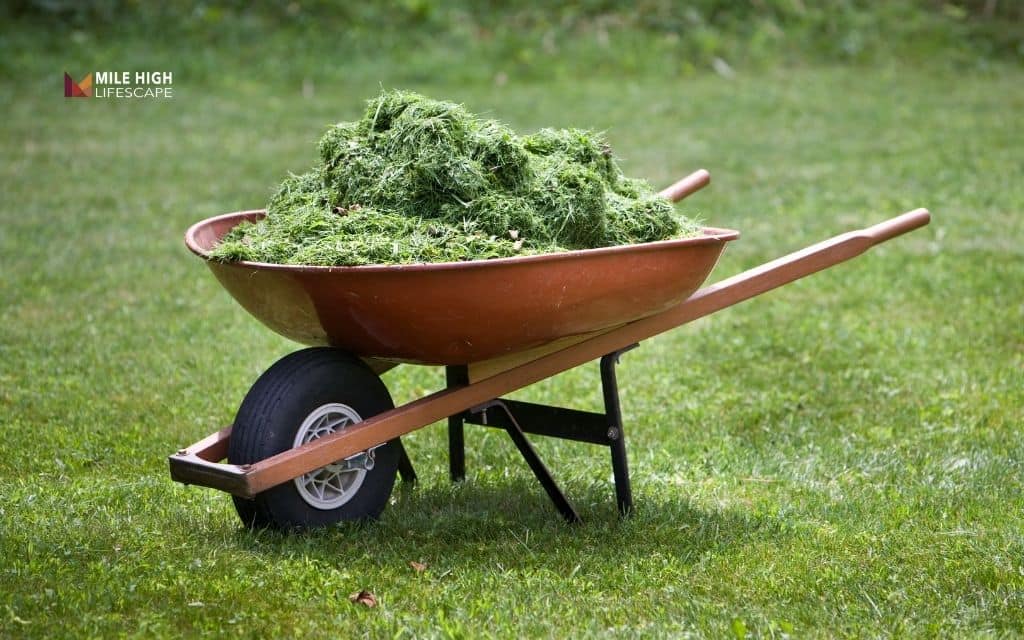
Grass clippings as mulch – Potential drawbacks
While the benefits are substantial, it’s important to understand the potential drawbacks and how to manage them:
Can mat down and block air/water
Clippings can mat down and block air and water if applied too thick. Fresh grass forms a dense, slimy layer when piled more than two inches deep. This layer prevents water from reaching roots and suffocates beneficial soil organisms. Apply in thin layers only, no more than 1 inch at a time.
May contain weed seeds
They may contain weed seeds if collected from lawns with active weed growth. Dandelions, crabgrass, and bindweed all produce seeds that survive mowing.
If you mulch garden beds with seed-laden clippings, you’re planting weeds directly into your growing areas. Only use clippings from weed-free lawns, or wait until after weeds have been treated and mowed 3 times.
Risk of herbicide contamination
There’s a risk of herbicide contamination if your lawn was treated with synthetic chemicals. Some herbicides can persist in clippings for weeks.
When you spread contaminated clippings in vegetable gardens or flower beds, the herbicide damages sensitive plants.
Tomatoes, beans, and squash are especially vulnerable. Avoid lawns treated with synthetic chemicals, or wait at least 3 mowings after treatment before using clippings.
Can smell or heat up
They can smell or heat up if not dried before use. Wet clippings in a pile generate heat through rapid decomposition. Temperatures can reach 150 degrees Fahrenheit, hot enough to kill plant roots and create foul odors.
Allow clippings to dry before applying them to garden beds. Spread them on a tarp or driveway for 24 to 48 hours until lightly crisp.
May attract pests
They may attract pests like slugs and earwigs if applied too thick or left wet. Decomposing organic matter draws insects. A thin, dry layer discourages pests. Mix with leaves or straw for balance, creating a blend that dries faster and provides better aeration.
How to use grass clippings as mulch (step-by-step guide)
Step 1: Collect properly
Use a mulching mower or bag attachment to gather clippings. A mulching mower chops grass into fine pieces that decompose faster. A bagger collects clippings cleanly without leaving trails across your yard.
Avoid clippings treated with herbicides or pesticides. Check your lawn care records. If you’ve applied chemicals in the past month, don’t use those clippings in vegetable or flower gardens. Wait for 3 full mowing cycles before collecting clippings for garden use.
Gather from dry, recently mowed grass. Mowing wet grass creates clumps that mat together. These clumps rot and smell. Mow in late morning after dew has evaporated but before afternoon heat peaks. This timing gives you dry clippings that spread easily and dry faster.
Step 2: Dry the clippings
Spread them thinly on a tarp or driveway for 24 to 48 hours until lightly crisp. Turn the layer once after 12 hours to ensure even drying. Properly dried clippings feel slightly brittle and have lost most of their green color.
This step prevents matting, odor, and mold. Dried clippings don’t clump or stick together. They spread evenly and allow air circulation. This simple preparation transforms problem-prone fresh grass into effective mulch.
Step 3: Apply a thin layer
Add no more than 1 inch of dried clippings at a time. Measure by eye or use your hand as a guide. One inch is about the distance from your palm to your knuckles. Spread evenly across the soil surface, avoiding piles or thick spots.
Keep mulch 2 to 3 inches away from stems and plant bases. Direct contact with plant stems holds moisture against tissue. This creates conditions for rot, disease, and insect damage. Leave a clear gap around each plant’s crown.
Rotate between 1 inch of grass and 1 inch of dry leaves. This creates a breathable, compost-like mulch blend that doesn’t compact or mat. The different materials nest together loosely, allowing water and air to penetrate while still blocking weeds and conserving moisture.
Step 4: Maintain and refresh
Reapply every 2 to 3 weeks during the active mowing season. Each time you mow, you generate fresh material. Use it to top up garden beds as the previous layer decomposes.
Turn over older layers occasionally to avoid compacting. A rake or cultivator loosens settled mulch and reintroduces air. This prevents anaerobic conditions and keeps decomposition aerobic and odor-free.
Water lightly after applying to settle mulch in place. A quick spray from the hose helps clippings settle into contact with soil. This speeds decomposition and prevents wind from blowing dry material around your yard.
Step 5: Compost excess clippings
If you generate more than your garden can use, compost the surplus. Mix with dry “brown” materials like leaves, shredded cardboard, or straw. A proper compost ratio is 1 part grass to 2 parts browns.
This balance provides nitrogen from the grass and carbon from the browns. The mix heats up, kills weed seeds, and breaks down into rich, finished compost in two to three months. Use this compost as mulch, soil amendment, or potting mix.
Store excess clippings in a bin or pile. Turn every few weeks to aerate. Water if the pile dries out. The result is balanced, nitrogen-rich compost for later mulching or soil improvement.
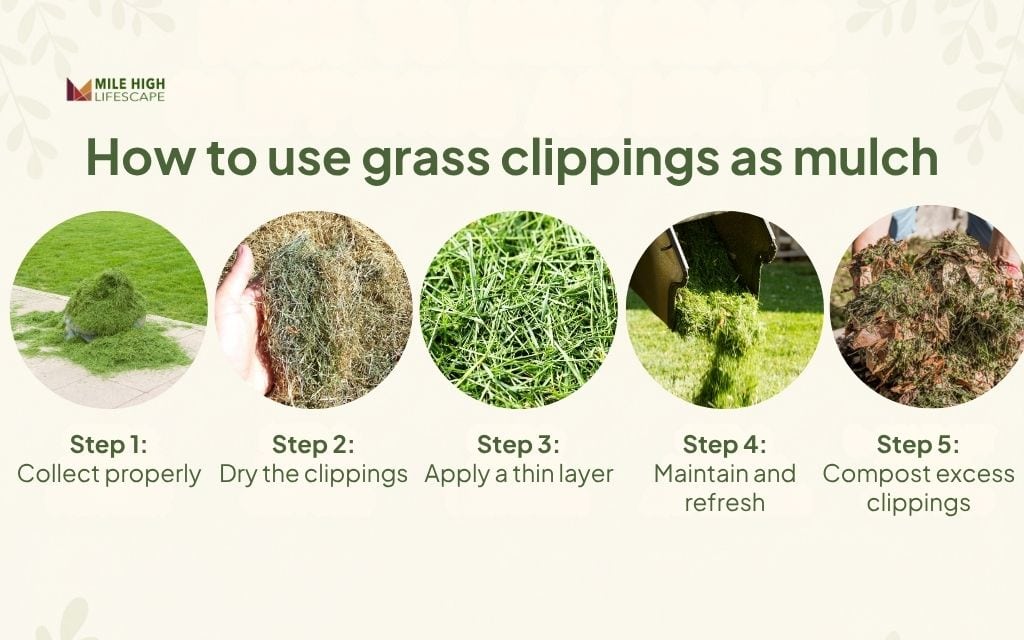
Using grass clippings in specific garden types
Vegetable gardens
Can grass clippings be used as mulch in your vegetable garden? Absolutely. They’re one of the best free mulch options for edible gardens.
- Use only untreated, chemical-free clippings
- Apply around tomatoes, peppers, squash, and corn for moisture and weed control
- Avoid thick layers around root crops (like carrots or onions) – can trap too much heat
For grass clippings vegetable garden applications, the nitrogen boost is particularly valuable for heavy feeders like tomatoes and corn.
However, wait until soil warms to at least 65°F before mulching. Denver’s short growing season means we need every bit of soil warmth in the early season.
Flower beds
- Blend with leaves for aesthetic appeal and aeration
- Ideal for perennials that benefit from cool, moist roots (lavender, coneflower, salvia)
When using lawn clippings in garden beds with ornamentals, the key is aesthetics. Fresh green clippings turn brown within days, which some gardeners find unattractive. Mixing them with darker materials like aged compost or shredded bark creates a more visually appealing mulch layer.
Around trees and shrubs
- Spread in 2-inch layers, keeping a gap around the trunk
- Combine with bark mulch for longer-term structure
For established trees and shrubs, grass cuttings as mulch work best as a supplemental layer beneath more permanent wood mulch.
This combination gives you the nitrogen boost from clippings with the long-term weed suppression of wood chips.
Lawn recycling (grasscycling)
Instead of collecting, leave clippings on the lawn itself.
- Acts as natural fertilizer, reducing nitrogen needs by 25–30%
- Perfect for Denver’s water-restricted irrigation cycles
- Saves disposal time and supports soil microbes
This is technically the easiest way to use grass clippings as mulch – just mow regularly and let the clippings fall back into the turf. Many landscapers encourage grasscycling as part of water-wise landscaping practices.
Common mistakes to avoid
Learning from others’ errors helps you succeed faster:
- Using wet clippings causes slime and odor. Fresh clippings that haven’t dried create anaerobic conditions that smell like rotten silage.
- Over-mulching suffocates roots. More is not better. Excessive layers cut off oxygen to soil and roots.
- Mixing treated and untreated grass: If you’re using clippings from multiple sources, ensure none have been treated with herbicides or pesticides that could harm sensitive garden plants.
- Ignoring layer turnover: As clippings decompose, they compact. Occasionally fluffing the mulch layer prevents water-shedding crusts from forming.
- Applying directly on seedlings can block light and heat. Wait until plants are at least 4-6 inches tall before mulching closely around them.
Grass clippings vs. Other mulch types
Understanding how lawn clippings as mulch compared to other options helps you make informed decisions:
| Type | Lifespan | Nutrient Value | Cost | Maintenance | Best For |
| Grass Clippings | Short-term | High (N-rich) | Free | Frequent refresh | Veggie beds, lawns |
| Wood Chips | Long-term | Moderate | $ | Low | Trees, shrubs |
| Compost | Medium | Very high | Free/low | Moderate | All gardens |
| Straw or Leaves | Medium | Medium | Low | Moderate | Veggies, flower beds |
| Rubber Mulch | Long | None | High | Low | Non-plant zones |
Tip: Combine grass clippings with compost or wood mulch to balance nutrition, texture, and durability. Many Denver landscapers use this layered approach to get the benefits of multiple mulch types simultaneously.
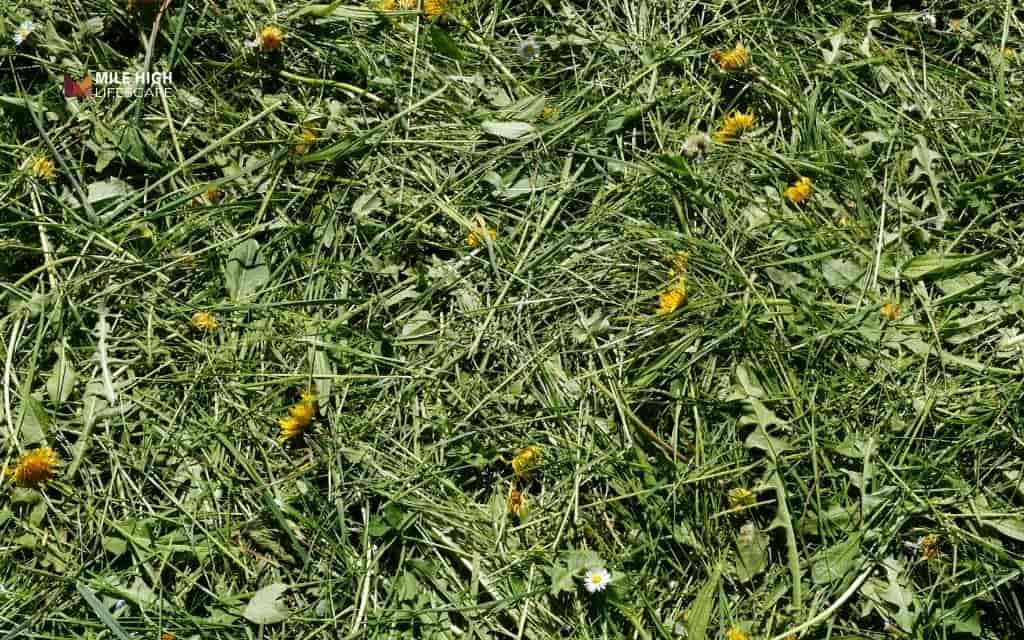
Conclusion
Using grass clippings as mulch is one of the easiest, most sustainable ways to feed your garden while cutting waste. In Denver’s dry, sunny climate, they save water, improve soil fertility, reduce erosion, and support eco-friendly gardening.
With proper drying and thin layering, your lawn clippings can transform from “trash” into a powerful, free resource, keeping your garden thriving while protecting water. Start with small test areas. Observe how your plants respond. Adjust thickness and frequency based on results. Within one season, you’ll develop a system that works for your specific garden conditions.
_______________
Mile High Lifescape has been proudly serving the Denver Metro area as the go-to landscape company. With a reputation for excellence, we offer a comprehensive range of friendly and professional landscaping and lawn care services.
Count on us to transform your outdoor space into a beautiful oasis that exceeds your expectations. Our mulching services help Denver homeowners build healthier soil and conserve water naturally.
Contact us at (303) 877-9091 or email hello@milehighlifescape.com for expert guidance on sustainable garden practices.
Frequently asked questions (FAQ)
Can I put grass clippings on top of existing mulch?
Yes, but keep the layer thin under 1 inch to avoid matting. Grass clippings settle and compress as they decompose. Adding them on top of existing mulch creates a combined layer that can become too thick if you’re not careful. Monitor total depth and rake through layers if they start to compact.
Do grass clippings make good mulch for vegetables?
Absolutely, as long as they’re untreated and dried. Vegetable gardens benefit from the quick nitrogen release that grass provides. Just ensure your lawn hasn’t been treated with herbicides or pesticides within the past 3 mowing cycles. Dry the clippings before applying them around food crops.
How long do grass clippings take to decompose?
Usually 2 to 4 weeks, depending on moisture and temperature. Thin layers break down faster than thick ones. Properly dried clippings that are spread thin may disappear in as little as two weeks during peak summer.
Can I use grass clippings if my lawn was treated with herbicide?
No. Wait at least 3 mowings after treatment before reuse. Herbicides persist in plant tissue for weeks. Using contaminated clippings in gardens can damage or kill sensitive plants. Keep treated clippings separate or compost them in a dedicated pile away from planting areas.
Do grass clippings attract bugs or pests?
Only if applied wet or too thick. Properly dried clippings spread in thin layers do not attract pests. The key is preventing the conditions that pests prefer – wet, thick piles of decomposing material. Dry your clippings before use, apply them thinly, and turn them occasionally to maintain aeration. Following these steps keeps pest problems to a minimum.
